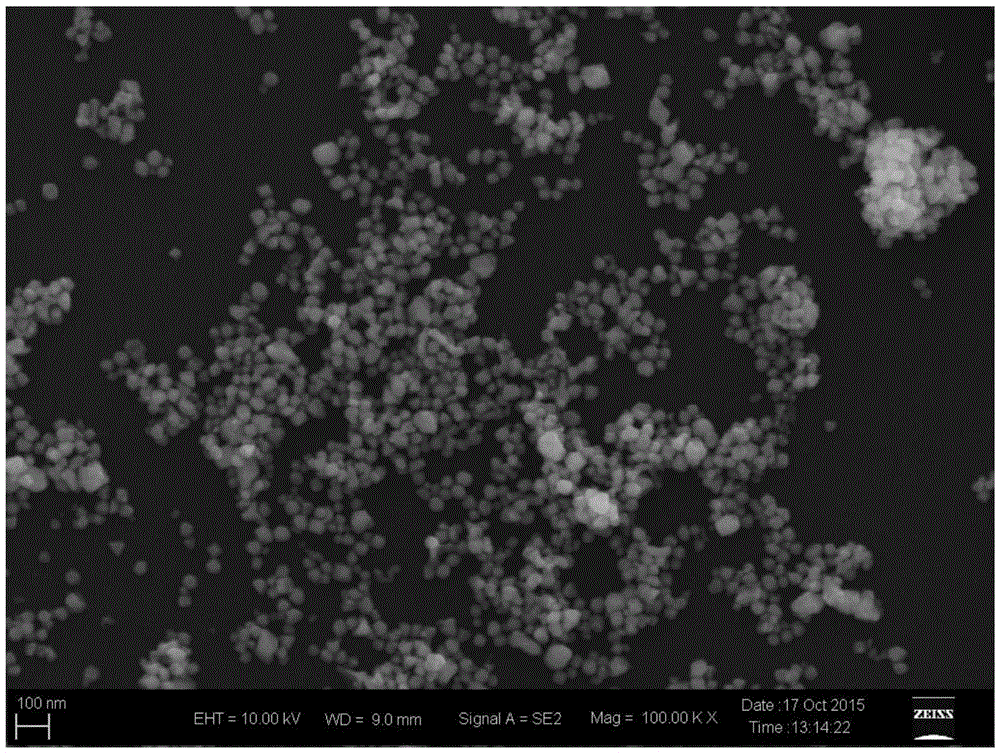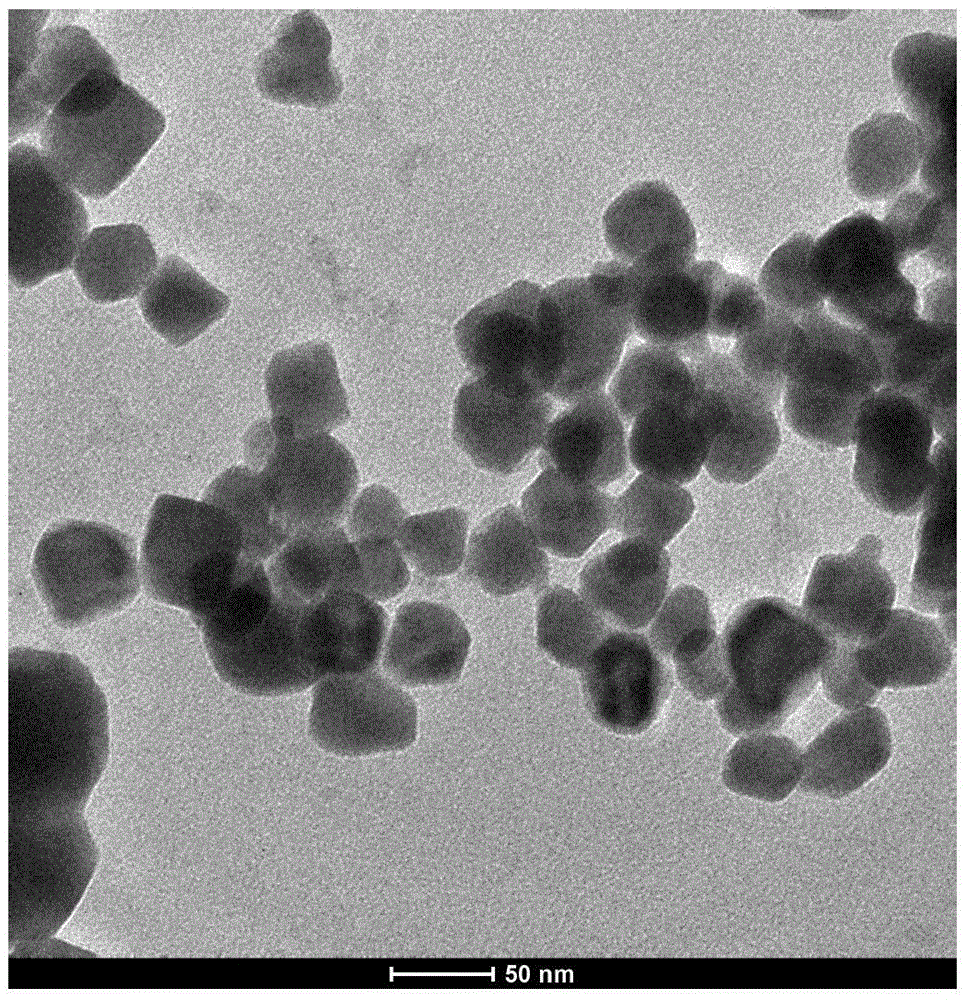Polyethylene glycol modified Bi nano photothermal conversion material as well as preparation method and application thereof
A photothermal conversion material, polyethylene glycol technology, applied in the field of biomedicine, can solve the problems of complex synthesis process, photothermal conversion performance, photothermal stability and biological safety to be improved, and achieves low cytotoxicity, ideal Photothermal treatment effect, strong absorption effect
- Summary
- Abstract
- Description
- Claims
- Application Information
AI Technical Summary
Problems solved by technology
Method used
Image
Examples
specific Embodiment approach 1
[0028] Specific Embodiment 1: In this embodiment, a polyethylene glycol-modified bismuth nano-photothermal conversion material is prepared from surfactants, bismuth salts, polypropylene amine hydrochloride aqueous solution, polyacrylic acid aqueous solution and cross-linking agent. The particle size of the polyethylene glycol-modified bismuth nano-photothermal conversion material is 20nm to 200nm, and the photothermal conversion efficiency of the polyethylene glycol-modified bismuth nano-photothermal conversion material is 25% to 35%. .
[0029] The preparation of the polyethylene glycol-modified bismuth nano-photothermal conversion material described in this embodiment is carried out according to the following steps:
[0030] 1. Add the surfactant into the solvent, mix uniformly under the condition of mechanical stirring, then add bismuth salt to it, continue stirring and mixing uniformly to obtain a reaction mixture, and heat the reaction mixture from room temperature to 50°C ...
specific Embodiment approach 2
[0033] Specific embodiment two: the difference between this embodiment and specific embodiment one is: the surfactant is one of α-D-glucose, maltose, ribose and polyvinylpyrrolidone PVP or a mixture of several of them; The solvent is one or a mixture of several of 1,2-propanediol, ethylene glycol and water; the bismuth salt is one or a mixture of several of bismuth nitrate, bismuth acetate and bismuth chloride; the reduction The agent is one of morpholine borane solution, sodium borohydride solution and hydroxylamine solution or a mixture of several of them; the concentration of the reducing agent is (10-40) mg / mL; the crosslinking agent A is 1 -(3-dimethylaminopropyl)-3-ethylcarbodiimide hydrochloride solution and a mixture of one or both of glutaraldehyde solutions; the cross-linking agent B is 1-(3- One or a mixture of dimethylaminopropyl)-3-ethylcarbodiimide hydrochloride solution and glutaraldehyde solution. Others are the same as the first embodiment.
specific Embodiment approach 3
[0034] Specific embodiment three: In this embodiment, a method for preparing a polyethylene glycol-modified bismuth nano-photothermal conversion material is carried out according to the following steps:
[0035] 1. Add the surfactant into the solvent, mix uniformly under the condition of mechanical stirring, then add bismuth salt to it, continue stirring and mixing uniformly to obtain a reaction mixture, and heat the reaction mixture from room temperature to 50°C to 150°C. Add a reducing agent to the reaction mixture under the condition of 50°C-150°C, react for 0.5min-5min, put it in an ice bath to cool to room temperature after the reaction, centrifuge and wash 1-5 times, collect samples and freeze-dry to obtain bismuth Nanoparticle material; the mass ratio of the bismuth salt to the surfactant is 1:(10~30); the volume ratio of the mass of the bismuth salt to the solvent is 1g:(150~250) mL; the reaction mixture and The volume ratio of the reducing agent is 1:(0.1~0.2);
[00...
PUM
| Property | Measurement | Unit |
|---|---|---|
| Particle size | aaaaa | aaaaa |
| Concentration | aaaaa | aaaaa |
| Concentration | aaaaa | aaaaa |
Abstract
Description
Claims
Application Information
 Login to View More
Login to View More - R&D
- Intellectual Property
- Life Sciences
- Materials
- Tech Scout
- Unparalleled Data Quality
- Higher Quality Content
- 60% Fewer Hallucinations
Browse by: Latest US Patents, China's latest patents, Technical Efficacy Thesaurus, Application Domain, Technology Topic, Popular Technical Reports.
© 2025 PatSnap. All rights reserved.Legal|Privacy policy|Modern Slavery Act Transparency Statement|Sitemap|About US| Contact US: help@patsnap.com



